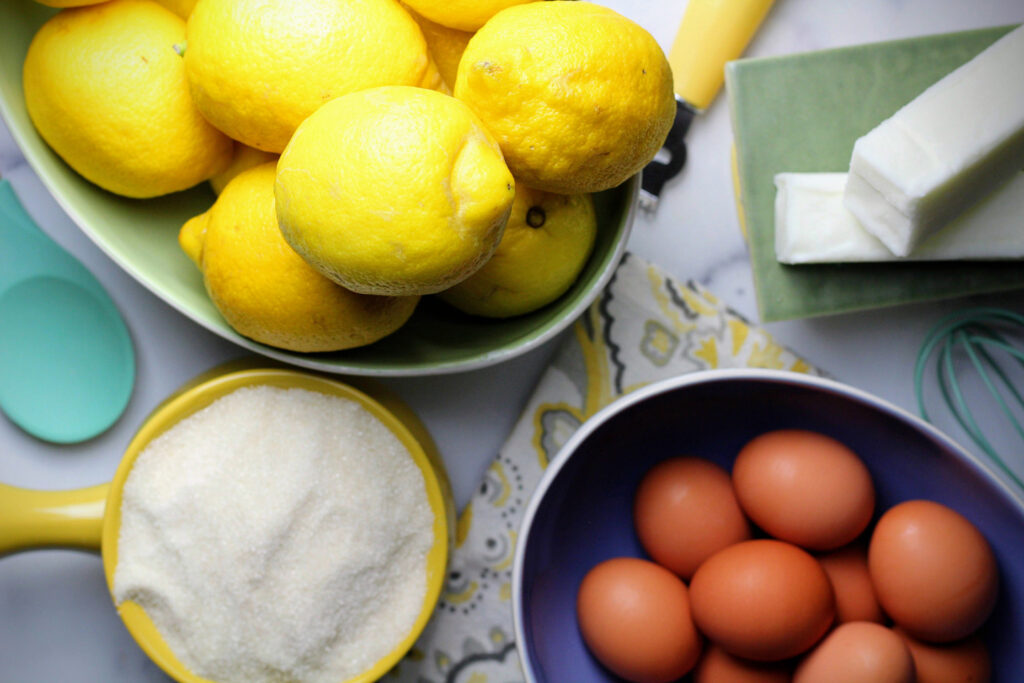
Lemon Curd from the Simpson House Inn
In a quiet, historic neighborhood a couple of blocks from Santa Barbara’s State Street, a lavish Victorian is hidden behind tall hedges and nestled amid tranquil English gardens. The grand dame of Santa Barbara’s bed and breakfast inns, Simpson House Inn and Cottages was built in 1874 and exudes a timeless elegance and sophistication. Six guest rooms in the main house feature antiques, Persian rugs, claw foot tubs, and intricate Victorian wallpaper treatments. Along the back of the property, carriage house suites and garden cottages offer spacious accommodations hidden among the sprawling oaks with white-washed vaulted ceilings, fireplaces, whirlpool tubs, and private decks or patios.



Every detail at the inn exudes luxury and seclusion, but its culinary offerings are arguably among its most memorable. Included with every stay are afternoon refreshments, an evening wine and hors d’oeuvres reception, dessert bites, and a gourmet breakfast served in-room or in a quiet spot amid the gardens. And while its architecture, gardens, and décor celebrate English estates of yore, the food the innkeepers present to their guests is true to the inn’s unique location—along a sunny swath of California coastline with a Mediterranean-like climate that grows some of the best produce in the country. As just one example, Santa Barbara joins a few other Southern California regions as a major producer of fresh citrus. In fact, California farmers provide about 60% of the citrus grown in the United States, including 80% of citrus eaten fresh and over 90% of the nation’s lemons.
Lemons are especially emblematic of Santa Barbara, thanks to a climate that allows them to grow and fruit almost year-round. Between the lemon groves dotting the hillsides and an abundance of backyard lemon trees, the sight and smell of these bright yellow miracle fruits are never far away. In the Goleta Valley just south of Santa Barbara proper, the largest community event of the year is a lemon festival that draws more than 40,000 visitors annually.


Given the Simpson House’s architectural inspiration and Santa Barbara’s agricultural heritage, it makes sense that the inn’s gourmet breakfasts often feature homemade lemon curd. Traditionally served with bread or scones at afternoon tea, lemon curd has been a staple in England since the 19th century. The Simpson House has its own version that is as rich and silky as any you’ll find across the pond. With just four ingredients and a foolproof preparation, it’s the perfect recipe for home cooks who want a luxurious sweet treat without all the fuss.
There are endless options for serving lemon curd, including as a spread whenever jam or preserves would normally fit the bill. But it can also be stirred into ice cream, used as a frosting or filling for a cake, for lemon bars or tarts, baked into pastries, or as a filling for thumbprint cookies. There are even savory applications—a marinade for roast chicken or a few drops whisked into a vinaigrette, for example. But perhaps the most “American” way to put this luscious lemon curd to use is in a classic lemon meringue pie. A full recipe makes more than enough filling for two nine-inch pie crusts, and the unused egg whites from the recipe are plenty for a decadently tall Swiss meringue topping.

Simpson House Inn Lemon Curd
Courtesy of Simpson House Inn and Cottages
Makes approximately 8 cups
Ingredients
- 1 cup butter
- 3 cups sugar
- 4 whole eggs, plus 12 egg yolks
- 1/3 cup finely grated lemon zest
- 1 ½ cups lemon juice (approximately 10 lemons)

Directions
Prepare the zest and juice in advance.
Bring water to boil in a double boiler (a heat-proof bowl over a pot that allows heat to reach the bottom of the bowl without the water touching it).


Melt the butter and sugar over the double boiler, stirring occasionally.
After the butter has melted, stir in the zest and juice.


In a separate bowl, beat the whole eggs and egg yolks together. Add the eggs to the butter and sugar mixture and whisk until smooth.
Stir constantly over the double boiler until the mixture coats the back of a spoon and leaves a permanent impression when you run your finger through it, about 10 to 20 minutes.

Chill the lemon curd immediately, covered with a layer of plastic wrap pressed directly against the curd surface to prevent a film from developing.